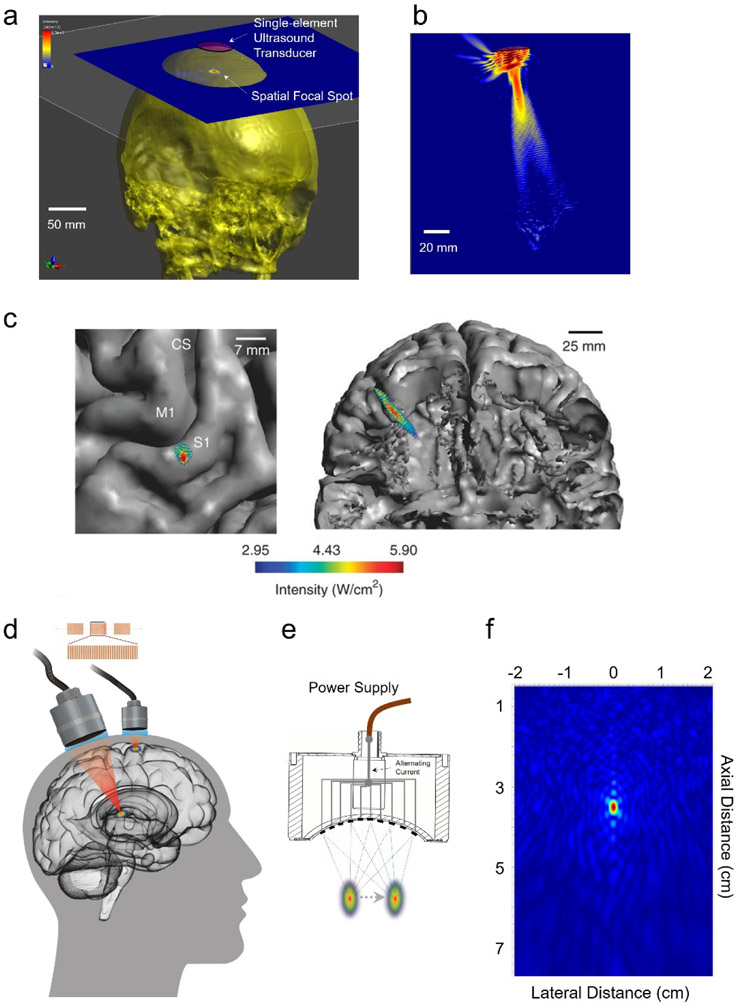Figure 4.
The current capability of tFUS, the developing focused ultrasound technique and a prospective view of multi-site ultrasound neuromodulation. a) illustrates the outstanding lateral specificity of tFUS among the non-invasive neuromodulation approaches when the 500 kHz ultrasound is targeted at primary motor cortex (M1) to evoke an acoustic-related potential. b) The axial profile of the 500 kHz single-element ultrasound beam is in a “cigar” shape within the skull cavity, which may limit the neuromodulation specificity in the axial direction. c) illustrates the spatial specificity of 500 kHz tFUS when the ultrasound is targeted at primary somatosensory cortex (S1) to modulate the sensory-evoked potential and sensing capabilities[147]. The transmitted ultrasound field is coregistered with the human brain model. (Figure is adapted from [147]) d) Multiple brain regions at cortex or at depth can be targeted by the tFUS using ultrasound refocusing, with the clinical implications highlighted in [148]. e) The focal spot can be spatially steered using multi-element ultrasound array, through which the possible error from mechanical targeting can be avoided. f) The much improved focus of 2-mm lateral and 4-mm axial specificity can be achieved using 256-element random ultrasound array distributed over a hemispherical aperture. Such an improved spatial focus is produced by 0.7 MHz ultrasound for a low acoustic attenuation from the skull.

